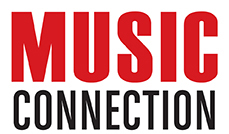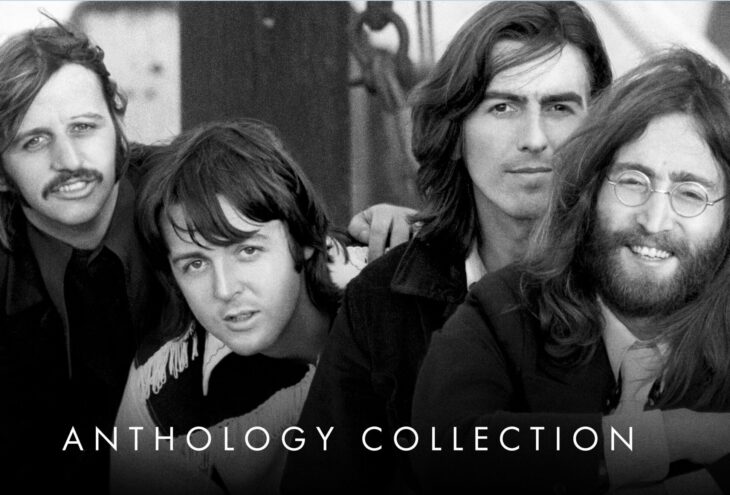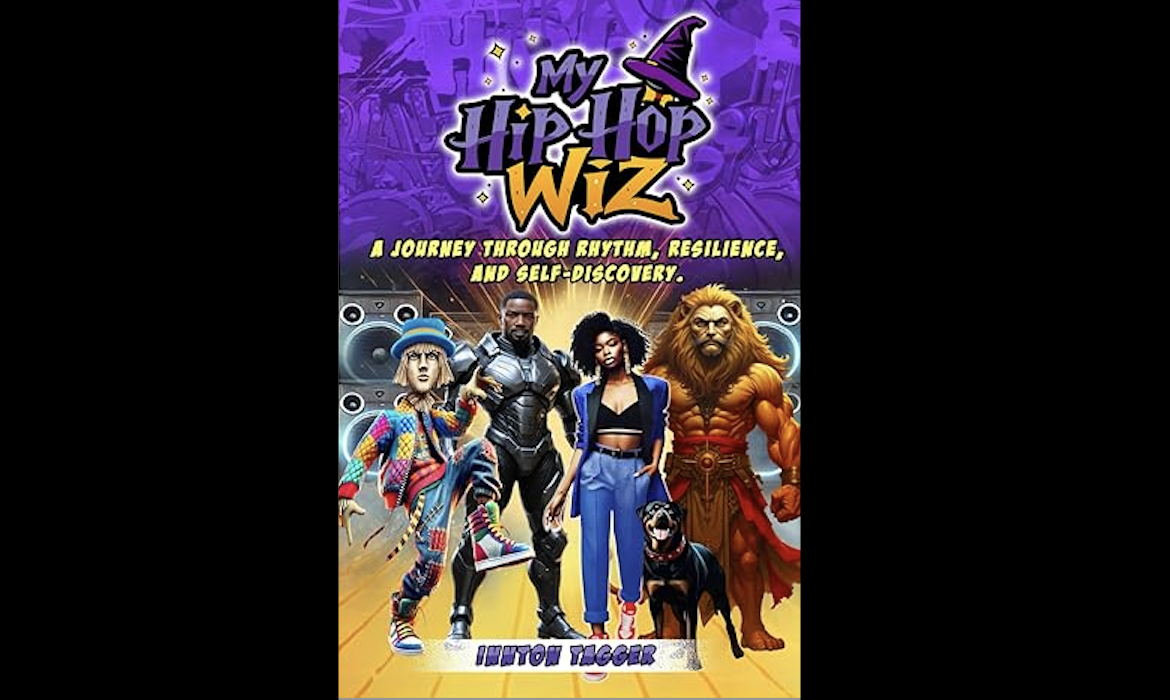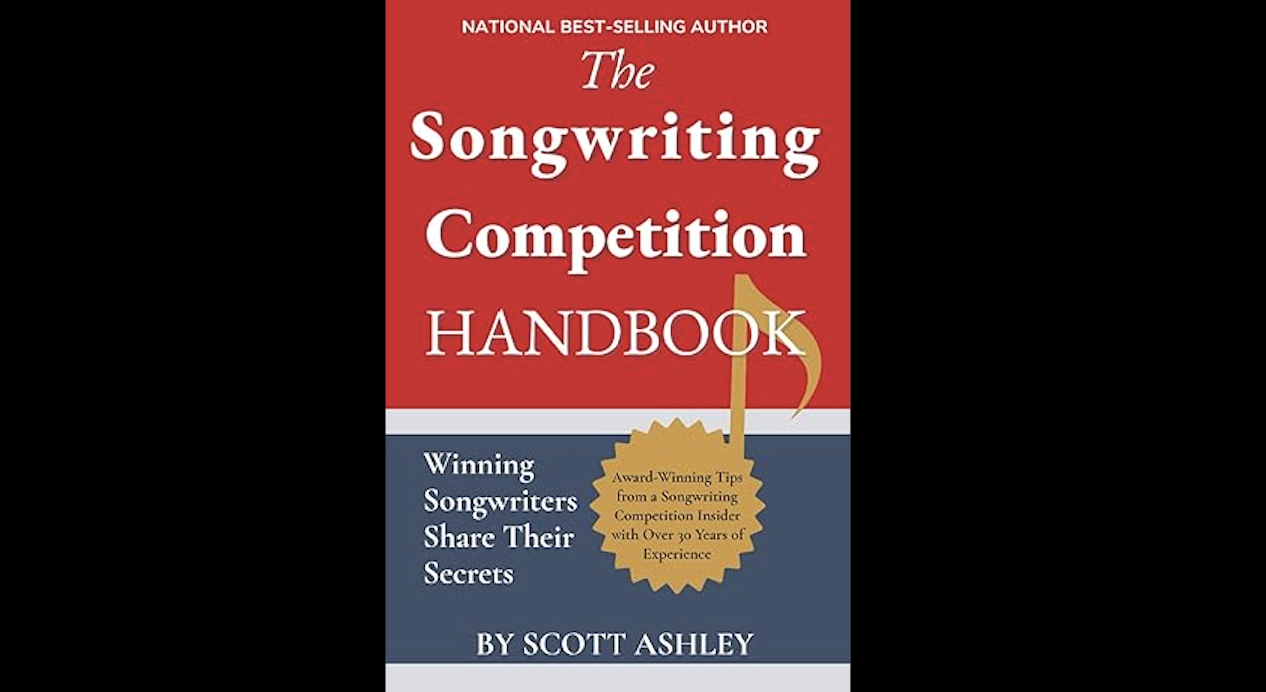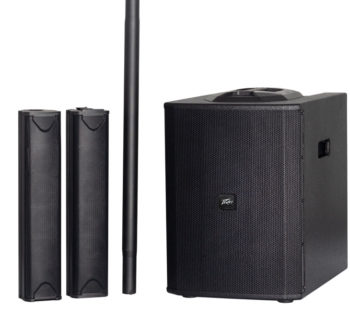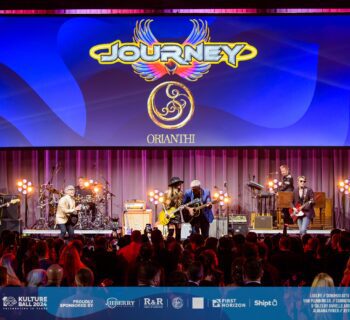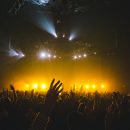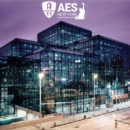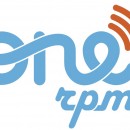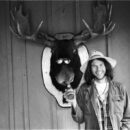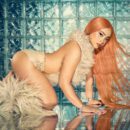An August 21, 2025 announcement from Walt Disney Studios, Apple Corps Ltd, UMe, and Chronicle Books touted the 2025 Beatles products.
“The series’ original eight episodes trace the legendary journey that began in Liverpool and Hamburg and soon captivated the world. They bring to life the timeless stories — of Beatlemania, the band’s groundbreaking arrival in the USA, their role at the forefront of the 1960s counterculture, their spiritual exploration in India, and their eventual breakup. And through it all, the constant thread: the music, always the music.
“There is now a completely new Episode Nine, including unseen behind-the-scenes footage of Paul, George and Ringo coming together between 1994 and 1995 to work on “The Anthology” and reflecting on their shared life as The Beatles.
“The restoration has been overseen by Apple Corps’ production team, working with Peter Jackson’s Wingnut Films & Park Road Post teams along with Giles Martin, who has created new audio mixes for the majority of the featured music.
“The musical side of The Anthology Collection, originally curated by George Martin, now remastered by Giles Martin, in the form of three double albums of rare material, a shadow story to the one told in the documentaries. They are an enthralling insight into the early development of songs that became the recorded masterpieces that resonate just as loudly today as they did when they were first recorded.
“It also has an important new element. Anthology 4, newly curated by Giles, includes 13 previously unreleased demos and session recordings and other rare recordings. It also includes new mixes of The Beatles’ Anthology-associated hit singles: the GRAMMY-winning “Free As A Bird” and “Real Love,” given new life by their original producer, Jeff Lynne, using de-mixed John Lennon vocals.
“The 25th Anniversary Edition of The Beatles Anthology book will be released on October 14th by Apple Corps Ltd. and Chronicle Books. Throughout its pages, John, Paul, George and Ringo share their honest, intimate and revelatory recollections of the band’s journey. Their memories are accompanied by impressions from their closest colleagues, including Neil Aspinall, George Martin, Derek Taylor and others. The bestselling 368-page book is beautifully illustrated with more than 1,300 photos, documents, artwork, and other memorabilia from the band’s archive.”
Having met all four Beatles, and interviewed Paul, Ringo and George, it’s appropriate to examine the Beatles’ deep connection to Hollywood and Los Angeles.
“Hollywood and the Beatles were the two greatest romances of the 20th century,” suggests writer, poet and deejay Dr. James Cushing. “What did they have in common? How did they intersect? How did one of these great affairs learn from the other?”
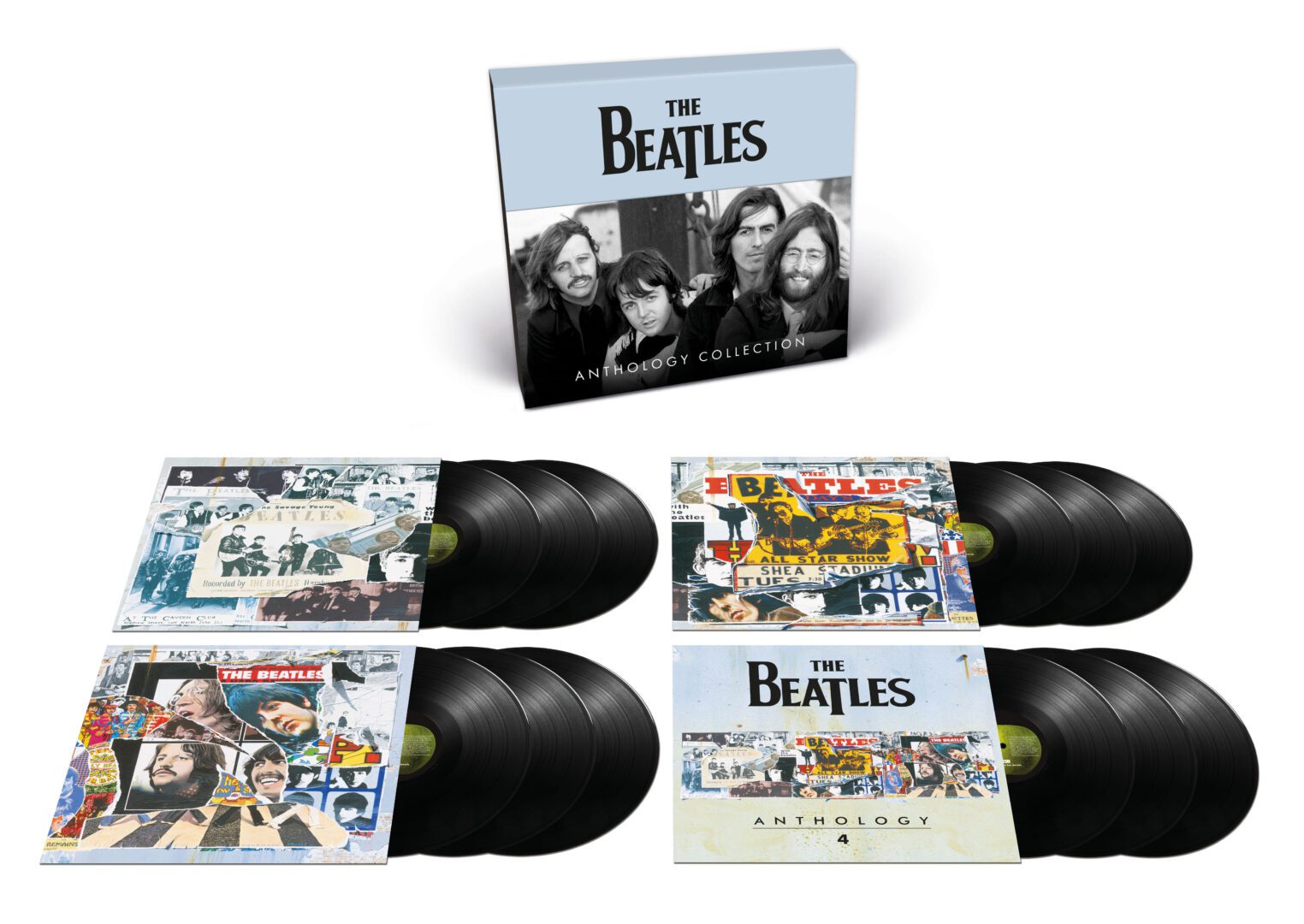
It’s not a secret why the Beatles had an emotional, musical, physical, and spiritual relationship to Hollywood and Southern California.
In the mid-seventies John Lennon moved to Los Angeles, liked it too much, and returned to New York to retire. Paul, George, and Ringo all purchased homes in Los Angeles County; George died in 2001 and cremated at Hollywood Forever Cemetery. His funeral was held in Pacific Palisades at the Self-Realization Fellowship Lake Shrine.
“I think Hollywood--the town and the industry--really set the stage for Beatlemania,” asserts UCLA graduate, and novelist Daniel Weizmann, “by raising a generation on Anglophilic fun from Alice in Wonderland to Peter Pan to all the Disney Hayley Mills classics. The daughter of actor Sir John Mills and novelist-playwright, Mary Hayley Bell, Hayley Mills was every local boy's British dream girl.
“Her big hit single “Let’s Get Together” for The Parent Trap, written by Disney employees Robert and Richard Sherman, was cut on Sunset Boulevard with producer Tutti Camarata at his Sunset Sound Recorders.
“It's almost impossible to overstate how Anglophilic Hollywood was in those days--and not just on the big screen. From the faux Tudor architecture to actors wearing ascots to even the street names...I myself grew up on Ben Lomond Place--5,000 miles from the loch!
“It was a funny post-war exchange, this Angeleno /Anglo connection, parodied in Evelyn Waugh's The Loved One: An Anglo-American Tragedy. L.A. hungered for English sophistication, but the actual Brits who came here were seeking the new thing, sunburst electric innocence.
“European intellectuals like Reyner Banham, Christopher Isherwood, and Aldous Huxley travelled to the Far West as a way of escaping Western Civilization. They wanted to dig the future, in all its surf-crazy, open-hearted glory. The Beatles, raised not just on American R&B but also on Honey Pie's Hollywood Dreams, are the ne plus ultra of this exchange.
“They played the Hollywood Bowl on August 23, 1964 to roaring crowds. Exactly four days later, on August 27th, Disney’s Mary Poppins--featuring classic songs like ‘Chim Chim Cher-ee’ also written by the Shermans—premiered at Grauman's Chinese on Hollywood Blvd. The world was getting smaller, faster than anybody could have predicted.
“A year later, at Walt's request, the Shermans wrote ‘It's a Small World.’"
Before the Beatles’ debut appearance on The Ed Sullivan Show on February 9, 1964, their 1961-1963 stage show and recorded repertoire implemented numerous tunes with origins from the United States, specifically Los Angeles and Hollywood. Based on their club act, Decca Records demo, and ‘63 BBC radio broadcasts, they could at times, be perceived as an L.A. music cover band.
The Beatles had vinyl library cards from the branches of regional record companies Specialty, Modern, Aladdin, Capitol, Arvee, Dore, Imperial, Philles, Liberty, Dot, Lute, and Del-Fi. Capitol Records in Hollywood on Vine Street, would eventually manufacture their catalog.
We all know what hearing the Ken Nelson–produced “Be-Bop-a-Lula” by Gene Vincent issued by Capitol during 1956 meant to John Lennon.
When McCartney saw Lennon with the Quarrymen for the very first time in 1957, John was singing (and free-styling his own lyrics to replace the ones he couldn’t decipher or recall) the Del-Vikings’ “Come Go With Me,” a Dot single from Tennessean Randy Wood’s Sunset and Vine-based company, distributed in the UK by the London logo. The Beatles cut the Dot Records of Arthur Alexander: “Soldier of Love,” “A Shot of Rhythm and Blues” and “Anna (Go to Him).”
Paul auditioned for John’s band with a word-perfect, impromptu performance of Eddie Cochran’s “Twenty Flight Rock,” recorded in 1956 at Gold Star Studios on the corner of Santa Monica Boulevard and Vine Street in 1956.
McCartney found Chan Romero’s “Hippy Hippy Shake,” another Gold Star session, on Del-Fi, forming a crucial part of most each and every set at Liverpool’s Cavern Club and the Star-Club in Hamburg, Germany, as an opener or closer.
“Till There Was You,” first sung by Paul with the Beatles in Germany, was written by Meredith Wilson in 1957 for The Music Man, a 1962 feature film was first a cast album recording for Capitol in 1957, produced by Nelson Riddle, before a Broadway run in New York.
Buck Owens recorded his “Act Naturally” at the Capitol Records studios in February ’63, and future label mate Ringo Starr sang it.
Keyboardist Billy Preston was an L.A. fixture. Billy met the Beatles in Germany when the band were the opening act for Little Richard and Preston was the star’s pianist. He is later key to Let It Be sessions.
During the Beatles’ late 1962 residency in Hamburg, Germany, a Ringo stage number was the Hollywood Argyles’ hit “Alley Oop,” produced and published by Kim Fowley and Gary Paxton.
“Shimmy Shimmy Kate,” a production from L.A. natives Fred Smith and Clifford Goldsmith on their popular song by the Olympics, named after a street in L.A., was performed live by the Beatles in Hamburg in 1962-and released years later on an album of questionable legality The Beatles Live! at The Star-Club In Hamburg, Germany; 1962.
Lafayette, LA–born and Los Angeles–raised blues guitarist Bobby Parker, who worked with the Specialty Records’ L.A. duo Don & Dewey and Sam Cooke as a teenager, earned a chart single in 1961 with “Watch Your Step.” The Beatles ’61 live sets included it.
In the documentary John Lennon’s Jukebox, Lennon acknowledged Parker’s opening guitar riff inspiring his “I Feel Fine” lead part. In a 1974 WNEW-FM radio interview, Lennon confessed Parker’s lick aiding the beginning of “Day Tripper” as well.
After the Beatles’ 1962 lunchtime sets at the Cavern Club in Liverpool, it was Ketty Lester’s rendition of “Love Letters” that played afternoons inside that venue. The disc was produced by Hollywood High School and Four Preps’ member Ed Cobb, in 1961 for the Era label in L.A.
There are hints of Walt Disney in “Do You Want to Know a Secret?” A Billboard No. 2 single released on Vee-Jay, from the Please Please Me ’63 album, sung by George Harrison. It has its origins in Disney's “I’m Wishing” copyright off the animated 1937 Snow White movie. “Want to know a secret? Promise not to tell” and colored this Lennon/McCartney effort.
This song also launched fellow Epstein-managed Liverpudlian Billy J. Kramer’s recording career: It was released in April of ’63, hitting No. 2 on the UK charts, making it the first cover of a Lennon/McCartney composition to become a genuine hit.
“John, Paul, and George first developed their ‘This Boy’ and ‘Yes It Is’ three-part harmonies from ‘To Know Him Is To Love Him’ in Hamburg, thanks to Fairfax High's own Philip Spector,” posed Beatlemaniac Gary Pig Gold.
“Meanwhile, Larry Williams was indeed the savage young Beatles’ second-favorite Specialty recording artist, and Coasters’ songs, including Leiber and Stoller’s ‘Three Cool Cats’ featured prominently in the band’s, albeit, unsuccessful, January 1, 1962, Decca Records audition.”
“I heard the Spector record ‘To Know Him Is To Love Him’ in the UK like the Beatles did,” recalled record producer, author, and Rock and Roll Hall of Fame inductee, Andrew Loog Oldham in a 2014 interview I conducted.
“It made an impact because of the use of room. The usage of tape delay. You knew something was going on even if you didn’t know what it was.
“Later, after, say I’ve recorded the Rolling Stones with ‘Not Fade Away,’ let’s say ‘Little Red Rooster,’ you realize which was us recording in England and similar mono circumstances in Regent Sound as opposed to Gold Star or where ever. You realize there is a time in all our lives when there’s passion takes a back seat to innocents and purity. Then when you get good at your job passion takes over. Of course, later it becomes desperation.
“The record of ‘To Know Him Is To Love Him.’ Basically, how can anybody who knows three and a half chords resist doing those backgrounds? It’s just there. It’s a George Harrison part as opposed to a John and Paul part. Meaning that it’s pretty bland. Maybe one of the things that drew me to the record that did it was there was a subliminal audio text that we didn’t know what it was but it was from Eddie Cochran records. Eddie had already recorded ‘Twenty Flight Rock’ in the same Gold Star. So, we didn’t know but you know, man.”
“When I was the lead guitarist of the Everly Brothers 1961–1963 we rotated nights with the Beatles in Germany,” Los Angeles High School alum Don Peake reminded me during a 2023 interview.
“John and Paul watched our shows. I always liked the Beatles and I knew they would be successful just like the Rolling Stones, who opened for us on a tour of England in 1963.
“I’m on the John Lennon Rock ’n’ Roll album Phil Spector produced in 1973. John remembered me at the sessions.”
If you think all of Keith Richards’ guitar lessons were gleaned from the Eddie Cochran and Chuck Berry playbooks, along with riffs on the Chess, Sun, Motown, and Stax record labels, this is what Keith said to New Musical Express in 1963.
“I have picked up as many hints on guitar playing as I can from Don Peake, who is the Everly Brothers guitarist. He really is a fantastic guitarist, and the great thing about him is that he is always ready to show me a few tricks.”
Actress, dancer and singer Ann-Margret, an RCA Records recording artist, had a Billboard Top 20 hit in 1961 with “I Just Don’t Understand,” later included on a Beatles’ BBC radio broadcast.
Live at the BBC and the 2013 On Air—Live at the BBC Volume 2, besides demonstrating their fondness for Spector, Romero, and Little Richard’s “Lucille,” houses the songwriting team of Jerry Leiber and Mike Stoller. Their “Young Blood,” “Kansas City/Hey, Hey, Hey, Hey” medley, and “Some Other Guy,” coupled with Larry Williams’ “Dizzy Miss Lizzy,” “Bad Boy,” and “Slow Down.”
In a 1998 office interview with Los Angeles composers/independent record producers Jerry Leiber and Mike Stoller, I asked Mike about “Some Other Guy.”
“It was a song we wrote with Richard Barrett, who we worked with at Red Bird records. He was a musician and producer. We were recording Richard. He was involved with the Chantels. He produced them, and I guess he wrote a lot of their songs, I don’t remember. He was a very capable producer and writer on his own. He wanted to do a session as an artist. We produced that, and we were going to put it out on our own label.
“I can’t exactly remember what year it was, but we ended up, I think, leasing it to Atlantic Records. Two sides, that’s all we did with him. ‘Some Other Guy’ and a thing called ‘Tricky Dickey,’ and I guess it found its way to Liverpool. It was not a hit.”
Leiber, Stoller and Doc Pomus co-wrote “Youngblood.”
“Jerry Wexler at Atlantic said ‘Doc has this great title. Would you like to take a crack at it?’ I was smart but very naïve at the same time. I didn’t know I was being hustled into a thing. [Laughs]. ‘Sure.’”
“We were later sitting in Atlantic’s recording studio and we were mixing something else and Jerry gave me the song on a legal pad and I wrote the music,” underscored Stoller.
“We wrote it in New York and came to L.A. and recorded it on Fairfax Avenue. ‘Youngblood’ and three others including ‘Searchin.’”
“We wrote ‘Kansas City/Hey!-Hey!-Hey!-Hey!,” clarified Fairfax High School alum Jerry Leiber.
“When we did that with Little Willie Littlefield it was all right. Later, Wilbert Harrison’s version came out; it sounded right.”
“Between the Beatles records and Paul McCartney’s recordings there is a vast array of versions,” added Belmont High’s Stoller.
“But the first version was taken from Little Richard’s version, which came out in the US right after Wilbert Harrison’s record came out. It just said “Kansas City.” Little Richard did the four ‘hey hey’s.
“I liked Paul McCartney as a vocalist, and especially loved him in those melodic things he wrote. Between him and John Lennon, that was the sixties as far as I’m concerned. And I loved the way he sang our songs. Just beautiful.”
“Ringo is one of rock’s all-time great drummers,” reinforced drummer Jim Keltner in a 2004 interview. “All you have to do is listen to the Beatles records, of course, especially, the Live at the BBC. Rock and roll drumming, doesn’t get any better than that. Earl Palmer, Hal Blaine, Gary Chester, Fred Below, and David ‘Panama’ Francis, great early rock and R&B drummers, and Ringo fit right in there with those guys. Listen to the Live at the BBC tapes and you’ll hear what I’m saying.”
Fellow drummer, Blondie’s Clem Burke, had a unique take on the Beatles. “They were the natural progression from the roots of the music. The early recordings spread the gospel of Little Richard, Buddy Holly, and Motown to a new generation of rockers. They are and always will be my muse. I’ll listen to a few songs before a show and get a rush of emotions. They had the best drummer in rock ’n’ roll that really made the recordings creative.
“As I sit here in my office listening to the Beatles’ album Revolver on my laptop while holding the vinyl in my hand. Yes, it occurs to me that just by looking at the cover art you already knew the LP would be different, and it was! As much as Rubber Soul influenced everyone from Brian Wilson to the Byrds and on, Revolver was the real experimental leap forward for the Beatles. Here is where they really began singing about things other than love and girls. Songs like ‘Taxman,’ ‘Eleanor Rigby,’ and yes ‘Yellow Submarine’ were taking their inspiration from a very different place. Both lyrically and musically they were provocative, and who exactly was ‘Dr. Robert?’
“Having Ringo play along to a tape loop for ‘Tomorrow Never Knows’ was extremely inventive and unheard of at the time, not to forget the use of horns and strings and sound collage as well. This is the Beatles pop art album, from the multimedia cover to the eclectic points of reference in the sound and lyrics it is in my opinion the sound of things about to change not only in music but in the world as we knew it.”
The Beatles At The Hollywood Bowl, songs curated from three shows recorded at the Hollywood Bowl in August 1964 and August 1965, was taped by Capitol Records arranger/producer Voyle Gilmore, employing the Wally Heider’s mobile studio truck and engineer Bill Halverson. George Martin mixed and sequenced an album issued in May 1977.
Audience screams culled from one of the Beatles Hollywood Bowl concerts are in the sound collage Jack Nitzsche and Neil Young implemented for Young’s “Broken Arrow” track on Buffalo Springfield Again.
In 1964, Nitzsche cut an LP, Dance to the Hits of the Beatles. That year, Jack’s pal, arranger/producer, H.B. Barnum, a child prodigy from the Manual Arts Hight School music program, reconnected with the Beatles on their ’64 US trek.
Barnum in 1961 was on tour as a singer in Europe, when he caught the Beatles live in Germany with Pete Best on drums. H.B. subsequently attended the recording session in Hamburg for The Savage Young Beatles. Barnum was a member of the Robins, wrote songs and arranged for Little Richard, and collaborated with David Axelrod at Capitol Records.
At a Capitol label function around a ‘64 Beatles press conference, Paul spotted H.B. Barnum in the crowd and spent time together. (Decades later McCartney wanted Barnum to do some arrangements for an album but H.B. was musical director for Aretha Franklin and had to pass on the gig).
On that August visit, McCartney made a trip over to the residence of Capitol Records staff producer Nik Venet, who signed the Beach Boys and produced their first two albums for the label.
During August 24, 1964, Alan Livingston, the President of Capitol Records and his wife Nancy Olson arranged a charity fund raiser for the Beatles in Brentwood the day after their Hollywood Bowl recital.
Guests paid $25.00 and were required to bring a child to the gathering raising ten grand for the Haemophilia Foundation of Southern California.
Among those in the celebrity throng: Rock Hudson, Angela Cartwright, Dean Martin, Donald O’Connor, Groucho Marx, John Forsythe, Los Angeles Mayor Sam Yorty, Ray Walston, Jack Palance, columnist Hedda Hopper, Jack Benny, Edward G. Robinson, Eddie Fisher, Barbara Rush, Gary Lewis, Lloyd Bridges with his kids Jeff and Cindy, and Eva Marie Saint with her son Darrell and daughter Laurette.
My mother Hilda’s Israeli hairdresser Tovah was invited. She worked at a salon across the street from Canter’s Delicatessen on Fairfax Avenue. Tovah showed our family photos of the party.
The evening of August 24th, Paul, Ringo, George, Neil Aspinall, Derek Taylor, Mal Evans and agent Roy Gerber went to actor Burt Lancaster’s home to watch the movie A Shot In The Dark.
On November 23, 1964, Capitol Records released a double documentary album The Beatles’ Story, produced by Roger Christian, a Hollywood deejay on station KFWB, who was also a lyricist (Beach Boys, Jan & Dean), along with songwriter (Beach Boys) and record producer (Hondells, Surfaris), Gary Usher.
The double pocket LP housed interviews and press conferences of the Beatles, with snippets from orchestrated arrangements of Beatles songs. The album reached number 7 on the Billboard Top LPs chart.
One overlooked association the Beatles established on Prospect Avenue in Hollywood was their unfading live broadcast from a UK theater of “Kansas City/Hey-Hey-Hey-Hey,” “Boys” and “I’m a Loser,” shown on the October 7th, 1965 Shindig! ABC-TV series and never screened on UK television.
In an interview with journalist Kirk Silsbee in the August 28, 2003, L.A. CityBeat, Steven Van Zandt, deejay, actor and guitarist in Bruce Springsteen & the E Street Band, emphasized the affiliation the Beatles had on America, Hollywood and Los Angeles.
“After World War II, everybody moved to the suburbs. In the late ’50s, for the first time, teenagers became a demographic with money to spend. Rock ’n’ roll captured the imagination in a way that took your mind away from the goal of getting a job and a career. Momentarily, anyway. Rock ’n’ roll suggested the possibility of getting a job in rock ’n’ roll.
“Before the Beatles, there were no bands, except the Crickets—Buddy Holly’s band. On February 13, 1964, there were no bands. On February 14, everybody wanted to start a band.”
In a December 2023 email correspondence with British-born writer/producer and Beatles expert, Martin Lewis, he assessed the SoCal music tan on the complexion of the Beatles’ early repertoire.
“That is because it was rarely consciously L.A. per se, it was VERY consciously American all the time. But - until they became more educated, they didn’t draw much distinction between the sounds and influences of the different US cities. They were all from the glamorous, glorious Technicolor US of A. So, they gobbled it all up. And remember that the names and locations of recording studios didn’t become widely known until album jackets started printing that kind of info - late 60s on. In 1962 no one in Liverpool knew that kind of detail. They knew they loved the sound. But had little point of geographical reference.”
When the Turtles finally reached London on the heels of their hit record “Happy Together,” Paul McCartney and the group’s singer Howard Kaylan traded verses one night on legendary L.A. duo Don & Dewey’s “Justine” at the Speakeasy Club. Howard told me, “Paul loved the song and Ringo played the spoons with us on the tabletop.”
The honorary fifth Beatle, in the Southern California radio market, was Dave “The Hullabalooer” Hull at 50,000-watt station KRLA (1110 AM) in Pasadena, California.
There is one important Beatles on American television 1964 moment that seems to be underserved in history which made an indelible mark in the country, courtesy of the monumental 1964-1966 ABC-TV series Shindig! taped in Hollywood.
Due to the popularity of the program and the Beatles reverence with British producer Jack Good, who they grew up with watching on English television, arrangements were made for a Shindig! crew and host Jimmy O’Neil to fly to London and to tape an episode. They band agreed to perform on October 3, 1964 after two days of rehearsal for a union fee of $1,400.00.
Members of the London Beatles Fan Club were invited to the Granville Studio where the group played three songs live: “Kansas City/Hey-Hey-Hey-Hey,” “Boys” and “I’m a Loser.”
O’Neil’s introduction of the Beatles in ’64 said it all, “The entertainment phenomena of the century!”
The records of “Kansas City” and “I’m A Loser” were not issued in the States for many months later. US deejays had a field day, as they had a Beatles scoop, as they recorded the 2 songs off the Shindig! broadcast. Capitol eventually stopped them from playing the 2 songs!
This Shindig! Goes To London packaged other acts for this special occasion: Sandie Shaw, Tommy Quickly, PJ Proby, Sounds Incorporated, Lyn Cornell and the Karl Denver Trio.
This edition of Shindig! was broadcast on October 7, 1964, but never seen in Britain. It’s the only US show that had the Beatles on live TV (not film clips) other than The Ed Sullivan Show!
In 2010 I appeared with Jimmy O’Neil on KCET-TV’s Things That Aren’t Here Anymore filmed at the former ABC-TV studios in Hollywood where Shindig! was lensed and I attended tapings.
Jimmy, a former deejay in Hollywood on stations KRLA, KFWB and KDAY enthused, “It was an amazing experience that I’ll never forget because it happened at a time when they did Shindig! right at the peak of Beatlemania.”
In my 2014 book, Turn Up The Radio! Rock, Pop and Roll in Los Angeles 1956-1972, Hull explained the audio bond KRLA had with the Beatles and devoted listeners.
“KRLA and I supported the Rolling Stones and the Beatles. In 1964 and ’65, [KRLA DJ] Bob Eubanks presented the Beatles at the Hollywood Bowl, and Eubanks produced the Dodger Stadium concert in 1966.
“It’s important to note that earlier, back in 1961 and ’62, KRLA played records from England that were hits: Acker Bilk’s ‘Stranger on the Shore,’ Kenny Ball’s ‘Midnight in Moscow,’ and Hayley Mills’ ‘Let’s Get Together.’
“I first heard the Beatles’ ‘Love Me Do’ as a promotional record in 1963 on WVKO in Ohio.
“I was close for a bit with Paul McCartney and Brian Epstein, through Derek Taylor. The relationship with them went beyond press conferences and show intros at the Hollywood Bowl and Dodger Stadium.
“I would see the Beatles at the places they rented in town. The closeness I had with the Beatles was owed to Louise Harrison, George’s sister, who was the one that gave me inside information, because she wanted her brother George to be part of a famous group. Brian Epstein was the best, but Derek Taylor as his publicity man—he really knew how to advance anyone and go into a market, and press release stuff that would make people want to know the answers to questions before he’d leave town. He was brilliant.
“I came from a world that started with the 45 RPM. The single. They didn’t care about the B-side, just the A-side, and played the poop out of it. Then the LP, the long player, arrived, helped immensely by the Beatles. KRLA was on AM radio.
“One thing about the Beatles, they brought one important thing to the American and worldwide music scene that nobody else did. Before them, like Frank Sinatra, one or two songs, maybe that were gonna be hits, the rest of it, filler. When it came to the Beatles, everything they did was great.
“Therefore, you were forced by the Beatles to play the albums, and selections like ‘If I Fell’ and ‘Girl.’ All of these things were not singles but taken out first by KRLA and played on the air to become hits with the market and no one could ever see that coming.”
Harrison’s relationship with Dave Hull and KRLA continued into 1968.
In mid-October ‘68, George began a nearly six- week stay in L.A. and visited Capitol Records. An executive handed Harrison an advance lacquer pressing planned for the North American release of the White Album.
George was a bit miffed at the sound of the reference disc he heard, and definitely not pleased by subtle changes in EQ and compression the mastering engineers at the US division had applied to the Abbey Road source tape.
It was then arranged for George over a two-day period to personally supervise a remastering process of a two-track stereo tape on the Capitol premises.
On November 15, 1968, Harrison drove to KRLA spinning tracks live on the air with Dave Hull from his now slightly tweaked acetate copy of the upcoming double LP.
After programming “Yer Blues,” Harrison teased the listeners with this wry comment, “You never knew we were really from Chicago, did ya? I mean, we learned all the basic blues rhythms and patterns when we were young lads living in Chicago. So, we just thought we’d get back into it again.”
Harrison then introduced “Back in the U.S.S.R.,” telling his rapt audience that “it reminds me a little of Brian Wilson.”
After “Revolution No. 1” was tracked, Harrison commented, “That was recorded before the other side of ‘Hey Jude.’ Less attack. Not as much as a revolution. More of the Glenn Miller version.”
About “Honey Pie,” Harrison said, “This, I’m sure, a lot of the Hollywood people, the California people, will identify with this one. Very typical of that era.”
Following the airing of “Bungalow Bill,” George told Dave Hull, “Bill is very interesting. Very interesting. We meet plenty of Bungalow Bills in our travels on the highway of life.”
Regarding the numbers “Don’t Pass Me By,” “Rocky Raccoon,” and “Piggies,” Harrison back-announced, “Ringo wrote that one. Very nice. Ringo has always been very country and-western-influenced. ‘Rocky Raccoon’ is very famous in our minds. I’m sure Rocky is the guy in all those westerns. ‘Piggies’ is written, really, two and a half years ago. It just seems funny that it’s come out now.”
He gave kudos to Ringo, Paul and John, Harrison, obviously well aware of the very recent and tragic June 1968 murder of Robert F. Kennedy in Los Angeles, slotted “Happiness Is a Warm Gun” and elaborated about the song’s origins. “‘Happiness Is a Warm Gun’ seemed to come by an American gun magazine after Kennedy, the second Kennedy, was killed. British newspapers printed ads for American gun mags. And one of the selling things was ‘Happiness is a warm gun.”’
George then left the station after signing off with, “This is George Harrison. KRLA. Believe it or not.”
"While in town, Harrison taped a brief, but most impactful appearance on The Smothers Brothers Comedy Hour," recalls faithful viewer Gary Pig Gold, "making note that it was on Tom and Dick's show - not, as had been the case up until then, via The Ed Sullivan Show - that the Beatles had just aired their 'Hey Jude' and 'Revolution' promotional videos:
"It was understood by the Fabs, courtesy of their L.A.-savvy publicist Derek Taylor, that the Smothers' hour was the hip outlet for North American television viewers at the time, due in no small part to the good taste and good ears of musical director Tommy Smothers. Speaking of whom, six months later a recently fired from CBS Television Tom was a most welcome guest at John and Yoko's Montreal Bed-In, rapping about censorship, current events, and then adding his guitar and vocals to 'Give Peace a Chance.'"
On January 28, 1964, the Beatles encountered Phil Spector and the Ronettes at a party at the Green Street home of deejay and Decca Records promoter, Tony Hall. Phil was a passenger on the airplane with the Beatles when they landed in New York on February 7, 1964.
“We met a few people through Phil Spector,” remembered Paul McCartney in the Beatles’ Anthology.
“We met the Ronettes, which was very exciting, and various others, such as Jackie DeShannon, a great songwriter, and Diana Ross and the rest of the Supremes. They were people we admired and as we went on, we met them all-all the people who were coming up as we were coming up. It was a matey sort of thing.”
In 1961, when Spector was living in New York and apprenticing at Atlantic Records under Jerry Leiber, Mike Stoller, Jerry Wexler and Ahmet Ertegun, he produced a Teddy Randazzo arrangement of the first version of “Twist and Shout,” a Bert Berns and Phil Medley song, recorded by the Top Notes which flopped.
Berns went into the studio in 1962, producing his variation on the Isley Brothers. The Beatles copied it from his R&B-tinged anthem.
I interviewed Phil Spector in 1975 for the now defunct Melody Maker at his Beverly Hills mansion.
“I met John and the boys years and years ago and they used to ask me, ‘Phil, how did you make all those consecutive hit records in a row, what’d you do?’ I said, ‘Well, I listen to everything around. I listen to what I’m making or just made and I’d say if it’s better or not, and then I’d put it out and it becomes No. 1.’ And they said, ‘That’s how we made our early albums. That’s how we did it.’
“So, while there was a secret to the extent of how it was made, there was no secret to disguise that it’s really hard work. I was mainly interested in singles and establishing a reputation in the record business, and they were interested only in making albums, and that’s why so much of it that we did was really good, because we listened to what was around us and we compared.”
In our 1975 interview, Spector praised guitarist, Barney Kessel, first call studio musician on three Larry Williams sides the Beatles would wax.
I mentioned to Phil in 1974 I went to a playback party for the John Lennon-produced Harry Nilsson album Pussy Cats heldat actor Peter Lawford’s house in Santa Monica. John and I had a short conversation about Williams and Lennon’s frenzied “Dizzy Miss Lizzy” at the Beatles 1965 Shea Stadium concert.
Spector then cited his propulsive production on the Crystals’ “Then He Kissed Me.
“That was an experimental record,” Phil revealed over a meal of steak tartar dipped in a cold jar of mayonnaise.
“John told me the Beatles got the idea to use a 12-string guitar that Barney Kessel played from that record. But I thought it was too spaced out. I was against it coming out. I was gonna can it.
“It was very easy to work with John Lennon,” mused the record producer of Let It Be.
“There was no problem working with him. I think he is one of the greatest singers in music. I honestly believe that. I feel the same way about Paul as a singer. They are in a league with few others. I don’t feel the same way about George or Ringo. John and Paul are great rock ’n’ roll singers,” summarized Spector.
We shouldn’t forget the recording and fashion tips singer Chris Montez of “Let’s Dance” fame had on the Beatles on their joint 1963 UK tour. “Let’s Dance” was a selection on 1961’s The Savage Young Beatles.
I met Chris in 2023, who was born Ezekiel Christopher Montanez. He grew up in the South Bay area of Southern California, graduating from Hawthorne High School. Montez is a childhood friend of Olivia Trinadad Harrison, maiden name Arias, also a Hawthorne alum, who was married George Harrison.
Olivia met George in Hollywood at A&M Records in Hollywood when his Dark Horse record label was distributed by the Jerry Moss and Herb Alpert company. Montez had two big hits, “Call Me” and “The More I See You,” with Alpert co-producing his debut LP. That first album had rather tongue-in-cheek liner notes by Beatles’ publicist Derek Taylor who was working for A&M.
Ravi Shankar’s Stateside recording catalog in the early 1960’s was cut at the World Pacific Studios on 3rd Street in L.A. with label owner/producer Richard Bock. The sitarist had a following in town before the Byrds, Doors and Beatles discovered his musicianship.
Musician/songwriter Chris Darrow remembers Ravi playing The Ash Grove club on Melrose Avenue in the late fifties. The Lakshmi Indian restaurant presented Shankar’s first Los Angeles recital. In 1967 Shankar founded the Los Angeles chapter of The Kinnara School of Music in West L.A. on Robertson Boulevard.
During 1998, I interviewed George Harrison and Ravi Shankar.
Harrison described his earliest attempt playing the sitar.
“Very rudimentary,” George said. “I didn’t know how to tune it properly, and it was a very cheap sitar to begin with. So ‘Norwegian Wood’ was very much an early experiment. By the time we recorded ‘Love You To’ I had made some strides.
“That was the environment in the band, everybody was very open to bringing in new ideas. We were listening to all sorts of things, Stockhausen, avant-garde music, whatever, and most of it made its way onto our records.”
Beatles’ scholar Martin Lewis reminds us that it was a Harrison composition that really cemented the Beatles connection to L.A.
“Between 1962-1966 there was not a single lyric written by John, Paul, George or Ringo that referenced any geographic location outside of England. In fact, very few places were mentioned at all before Strawberry Fields and Penny Lane in early 1967. And no American locales made it to a Beatle-written lyric in those years.
“Certainly, they sang lyrics that referenced Americana but those were their covers of American compositions. In 1968 – their lyrics went global – with references to Miami, Moscow and Chairman Mao et al. But the lead-in to all that travel and multiculturalism started on 1967’s Magical Mystery Tour
“And it was George who gave that first Fab shout-out to the USA – and Los Angeles in particular. With his song Blue Jay Way. With its opening line ‘there’s a fog up on L.A…’”
(Harvey Kubernik met all four members of the Beatles and interviewed Paul, George and Ringo over the decades. Harvey is the author of 20 books, including 2009’s Canyon Of Dreams: The Magic And The Music Of Laurel Canyon, 2014’s Turn Up The Radio! Rock, Pop and Roll In Los Angeles 1956-1972, 2015's Every Body Knows: Leonard Cohen, 2016's Heart of Gold Neil Young and 2017's 1967: A Complete Rock Music History of the Summer of Love. Sterling/Barnes and Noble in 2018 published Harvey and Kenneth Kubernik’s The Story Of The Band: From Big Pink To The Last Waltz. In 2021 the duo wrote Jimi Hendrix: Voodoo Child for Sterling/Barnes and Noble.
Otherworld Cottage Industries in 2020 published Harvey’s Docs That Rock, Music That Matters. His Screen Gems: (Pop Music Documentaries and Rock ‘n’ Roll TV Scenes) is scheduled for 2025 publication.
Harvey wrote the liner notes to CD re-releases of Carole King’s Tapestry, The Essential Carole King, Allen Ginsberg’s Kaddish, Elvis Presley The ’68 Comeback Special, The Ramones’ End of the Century and Big Brother & the Holding Company Captured Live at The Monterey International Pop Festival.
During 2006 Kubernik appeared at the special hearings by The Library of Congress in Hollywood, California, discussing archiving practices and audiotape preservation. In 2017 he lectured at the Rock and Roll Hall of Fame in Cleveland, Ohio, in their Distinguished Speakers Series. Amidst 2023, Harvey spoke at The Grammy Museum in Los Angeles discussing director Martin Scorsese's The Last Waltz music documentary.
Kubernik is currently seen in the August 2025 documentary, The Sound of Protest now being broadcast on the TVOD Apple TV broadcasting service. https://tv.apple.com › us › movie › the-sound-of-protest. Director Siobhan Logue’s endeavor features Smokey Robinson, Hozier, Skin (Skunk Anansie), Two-Tone's Jerry Dammers, Angélique Kidjo, Nina Simone, Holly Johnson, David McAlmont, Rhiannon Giddens, and more.
Harvey is also an interview subject with Iggy Pop, Bruce Johnston, Johnny Echols, the Bangles' Susanna Hoffs and Victoria Peterson, and the founding members of the Seeds in director Neil Norman’s documentary The Seeds - The Seeds: Pushin' Too Hard that will be available in November 2025 on DVD with bonus footage is scheduled for release via the GNP Crescendo Company.
The New York City Department of Education is scheduled to publish in 2025 the social studies textbook Hidden Voices: Jewish Americans in United States History. Kubernik’s 1976 interview with music promoter Bill Graham on the Best Classic Bands website Bill Graham Interview on the Rock ’n’ Roll Revolution, 1976, is included).
